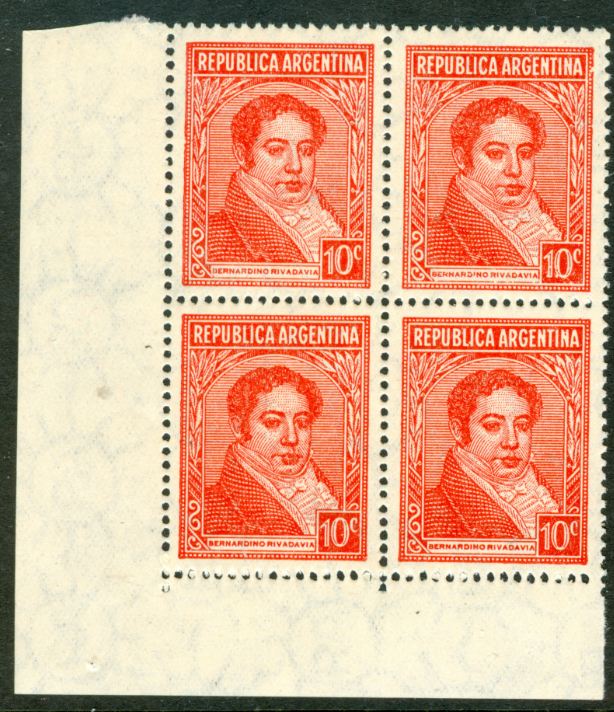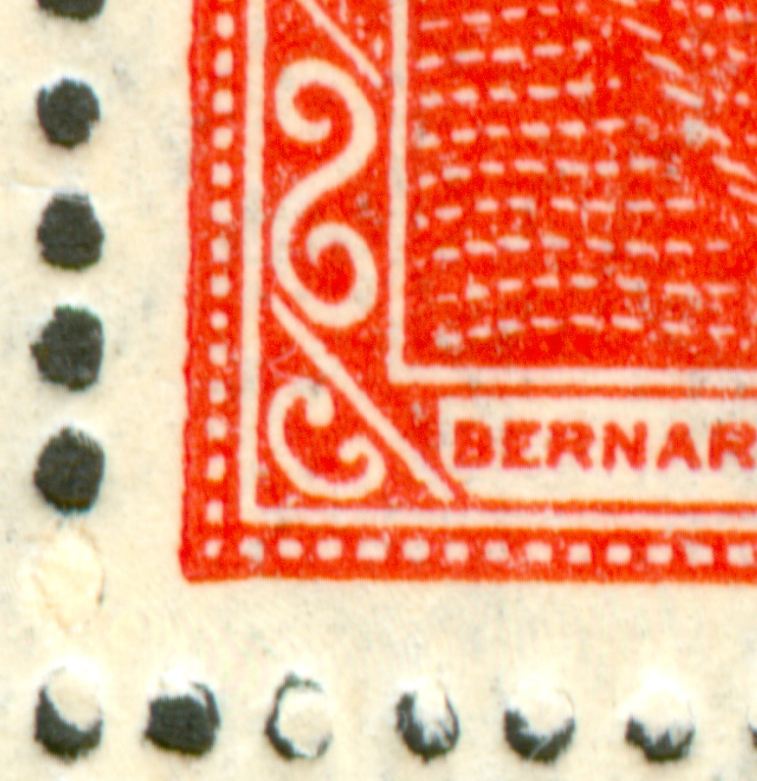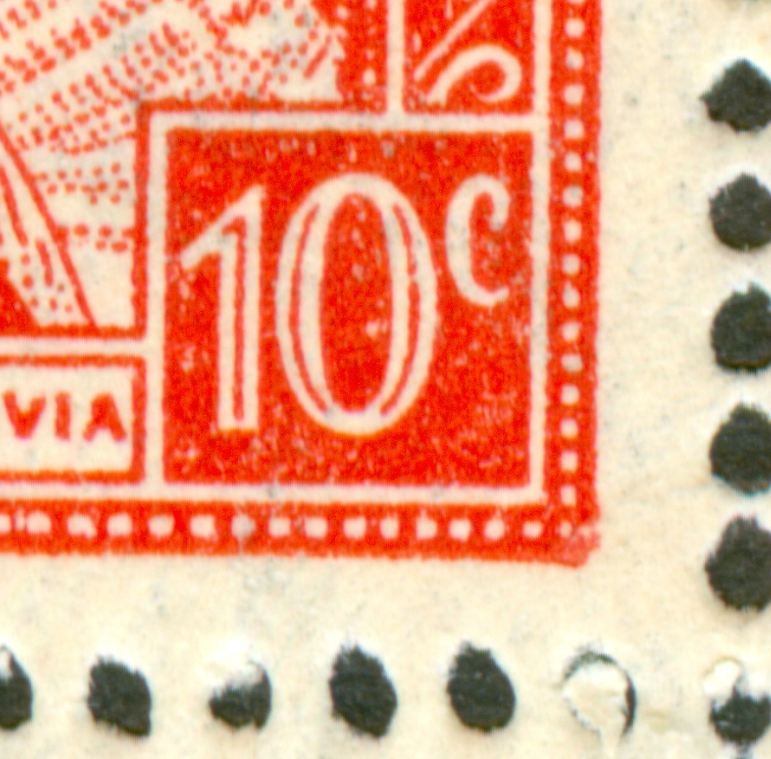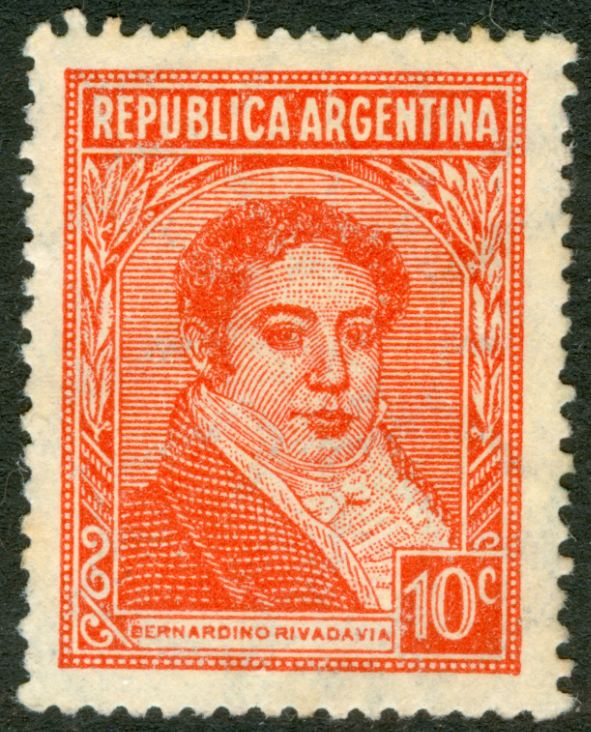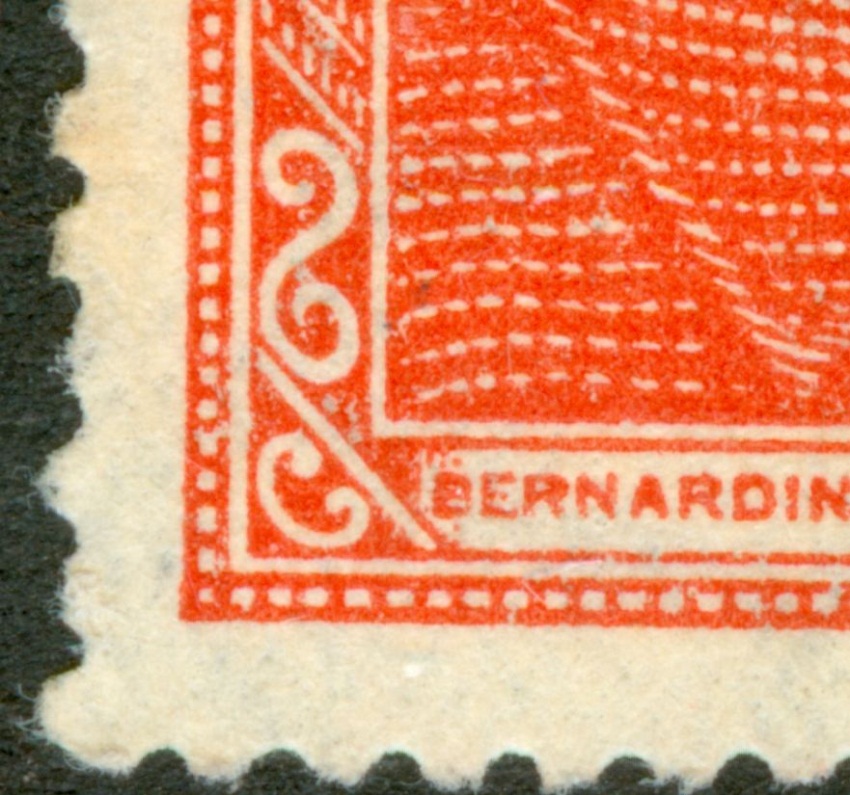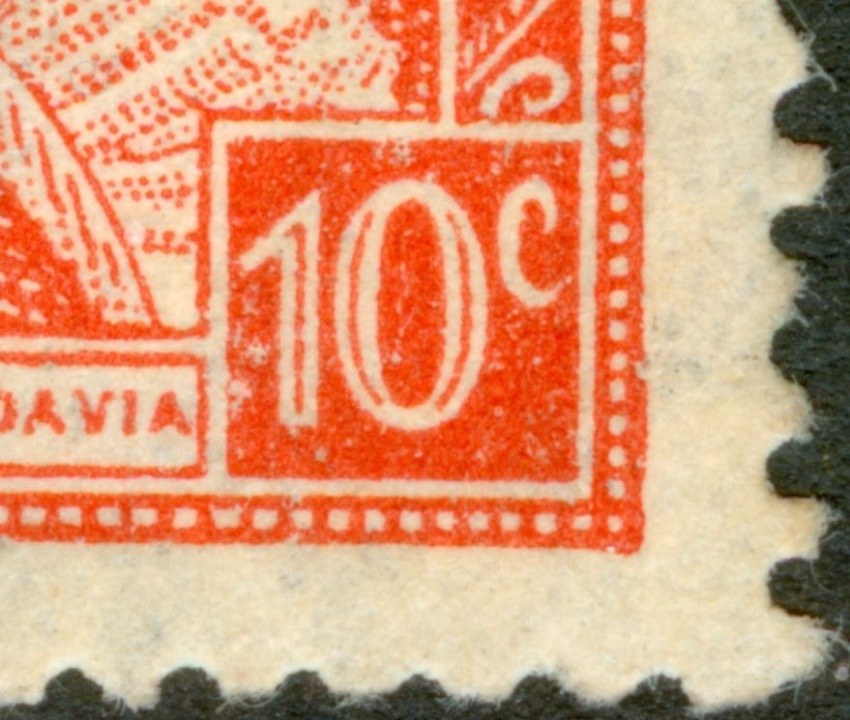Página 9 de 19
Re: The Manual - G.A. Pettigiani - 2010
Publicado: 08 Oct 2010 11:00
por Fredy
Clarification for Mr. Rein:
OS table was not made by me, the author is Mr. Pettigiani. I just worked with him informing the stamps in my collection.
Greetings.
Fredy
Re: The Manual - G.A. Pettigiani - 2010
Publicado: 08 Oct 2010 11:30
por Rein
Fredy escribió:Clarification for Mr. Rein:
OS table was not made by me, the author is Mr. Pettigiani. I just worked with him informing the stamps in my collection.
Greetings.
Fredy
Fredy,
OK,
so you have your stamps in your collection sorted out by types of papers according to the classification of mr Pettigiani? Or you were using another classification [e.g .Bardi] and let mr Pettigiani do the "translation" ?
In your article "Sobrecarga Servicio Oficial de 12mm. Clasificación por sistemas de impresión" you used a lot descriptions:
1 tirada - papel inglés
2 tirada desde 1938
3 tirada desde 1940
filigrana rayos rectos
papel importado
papel nacional
papel tizado
papel sin filigrana
papel sin filigran - T1
papel sin filigran - T2
papel satinado 1939
filigrana rayos ondulados
filigrana sol chico
papel mate
which makes a "translation" not so easy I suppose .....
Re: The Manual - G.A. Pettigiani - 2010
Publicado: 08 Oct 2010 13:12
por Rein
The 3 types [design-wise] of the 5c Mariano Moreno are dealt with for the time being. More about this 5c when I deal with the various denominations value by value.....
Next in line for different design-types is the 1945 José de San Martin stamp!
to be continued ....
Re: The Manual - G.A. Pettigiani - 2010
Publicado: 08 Oct 2010 18:07
por Rein
The offset-litho version and the typography version usally are quite alike... But with this 5c José de San Martin it was a bit different.
As this procedure of using two methods of printing was not new - 1c Sarmiento, 5c Moreno, 10c Rivadavia, 20c Torito...
we may ask why???? What were the profits for the Postal Administration or for the Casa de Moneda de la Nacion???
Anyhow, no catalogue-maker indicates that there is a basic difference in design for this 5c!
In offset-litho in full:
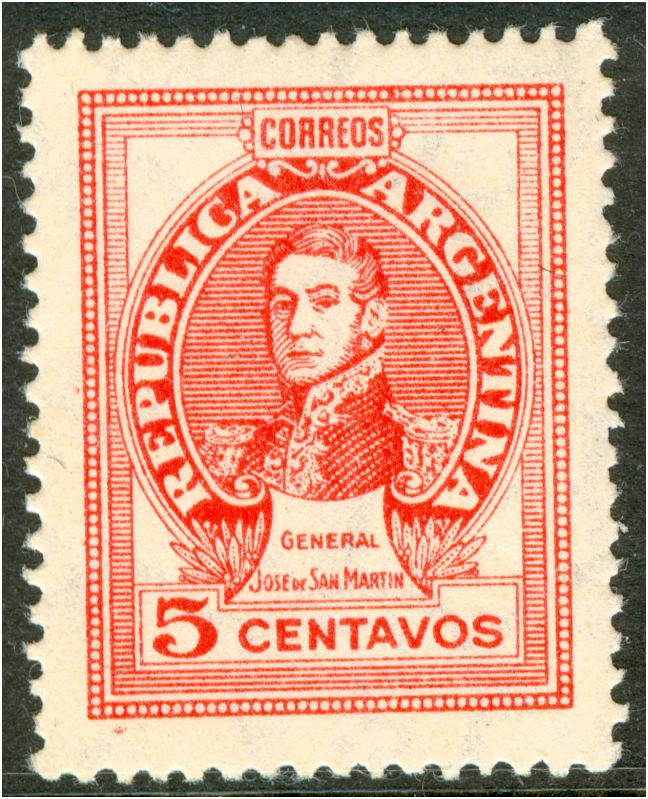
in typography in full:
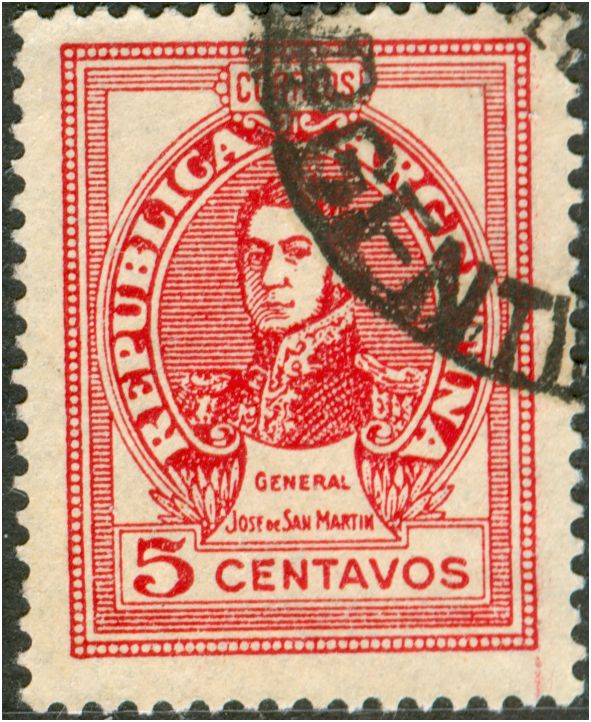
in offset-litho the fragment:

in typography the fragment:
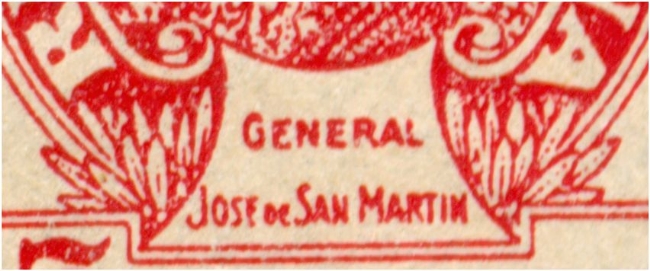
In offset-litho the details of the leaves that show nice little circles:
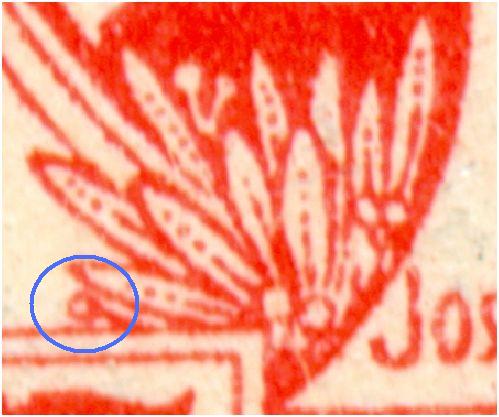
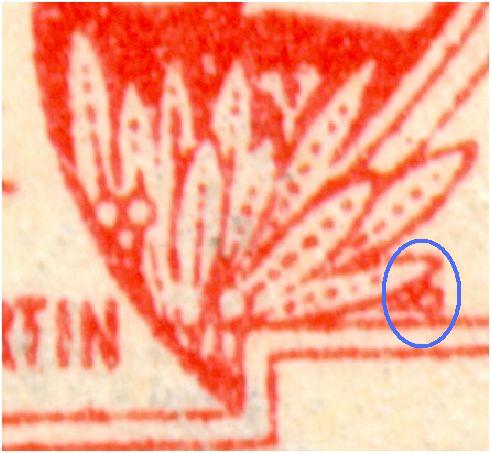
In typography the details of the leaves:
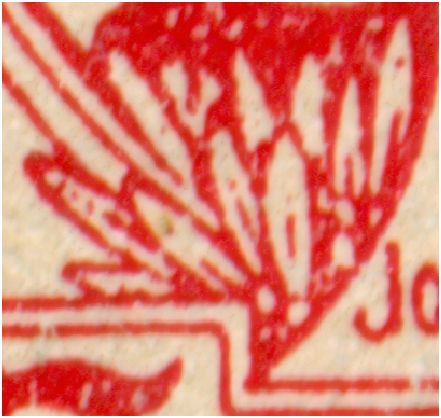
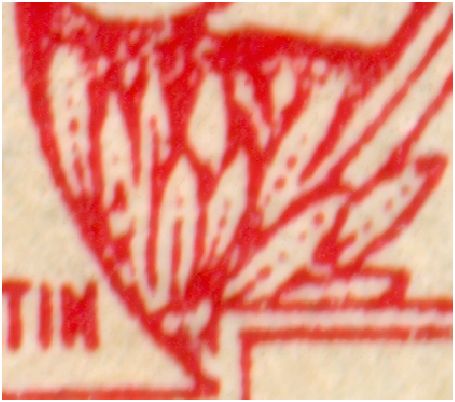
to be continued ....
Re: The Manual - G.A. Pettigiani - 2010
Publicado: 08 Oct 2010 18:14
por Rein
The 5c José de San Martin in offset-litho existed in 2 types I found out last year.
by Rein » 03 Dec 2009 20:13 escribió:
The 5c JSM in offset-litho exists in 2 types I found out just now. The different types of paper that go with it have to be established yet....
The different types of paper that go with it have to be established yet....
Type I:
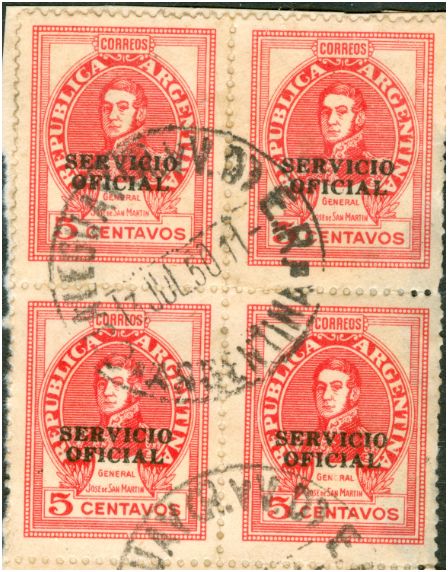
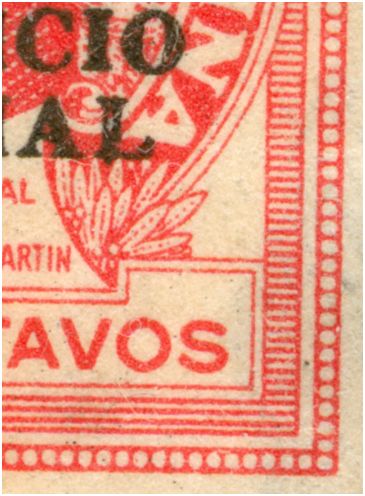
Type II (since 1951?):
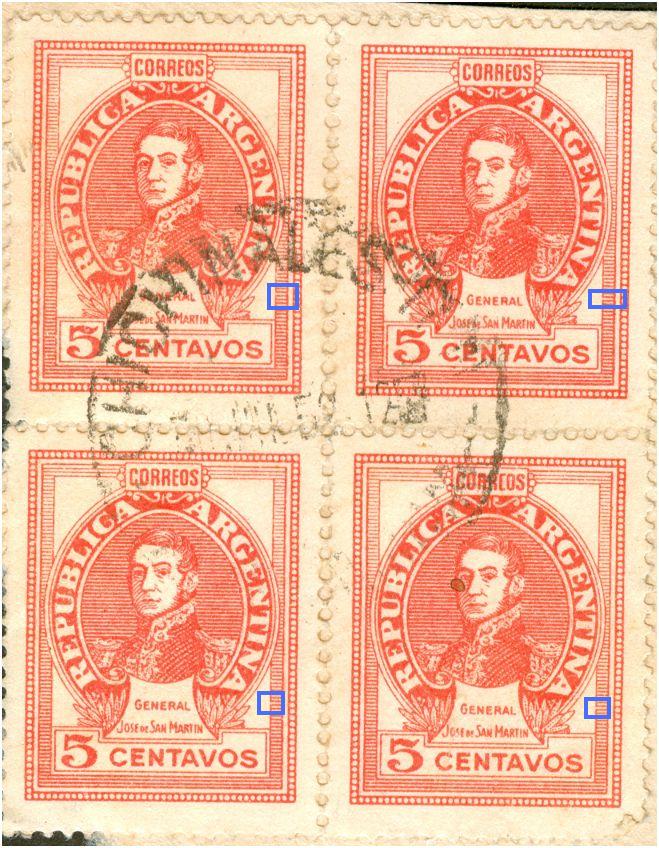
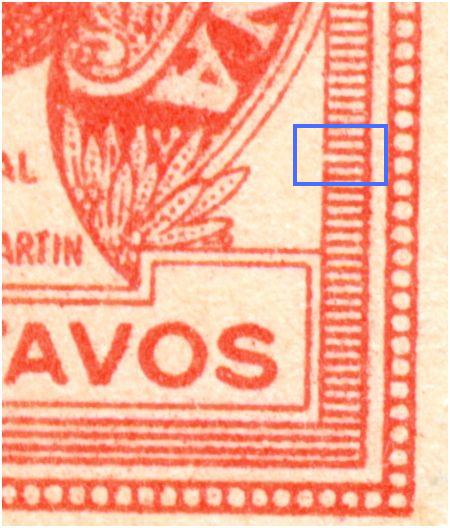
Thanks to the book of Pettigiani we now know that the "open stairs" as he calls it started in September 1950!
to be continued ....
Re: The Manual - G.A. Pettigiani - 2010
Publicado: 09 Oct 2010 10:51
por Rein
Let us leave the 5c alone for a while!
The 10c Rivadavia has been terribly neglected in the Argentinean catalogues. Not only the offset-litho version but also the typography version. The base stamps are so common that nobody had really bothered too much ....
Let us start with the 10c in typography as that version was issued first! Not more or less simultaneously with the offset-litho version or the offset-litho version first!
The red coloured version is supposed to have 3 versions if we are to believe the catalogues. Type I first and then type II in 2 perforations!
Relying a lot on the article made by Leopoldo Tenorio Casal (Nr 40 Revista del Centro Filatélico de la Plata - 1947) we should make a distinction between the sheet-fed and the reel-fed versions!
10c red:
01.10.1935 sheet-fed, 1st plate [only 1 printing]; in counter sheets of 20x10; the stamp measuring 24.0x30.5mm, the design 21.0x27.0mm. Known as tipo I with comb perforation 13.333:13.147 [13 1/2:13 in M.T.].
17.12.1935 sheet-fed, 2nd plate [2 printings]; in counter sheets of 20x10; the stamp measuring 24.0x30.5mm, the design 20.6x26.7mm. Known as tipo II with comb perforation 13.333:13.147 [13 1/2:13 in M.T.]
01.06.1936 reel-fed, 11 printings; in counter sheets of 10x10; the stamp measuring 24.0x30.0mm, the design 20.0x26.5mm. Known as tipo II with comb perforation 13.333:13.333 [13 1/2 in M.T.]
x.09.1938 sheet-fed, 3rd plate [2 printings]; no further details but for the fact that according to Tenorio Casal the word "Bernardino" is back to the length of the 1st plate....
The latter may turn out to be quite problematic as no-one has paid any attention to it and because of the fact that it had been soon replaced by the 10c chestnut!
to be continued ...
Re: The Manual - G.A. Pettigiani - 2010
Publicado: 09 Oct 2010 10:51
por Rein
Re: The Manual - G.A. Pettigiani - 2010
Publicado: 09 Oct 2010 12:11
por rubiera
Rein,
I am eagerly awaiting this discussion on the 10c Red. I think the way to study the very last printing is to use the 'servicio oficial' printing, which is rare and from 1938.
tony
Re: The Manual - G.A. Pettigiani - 2010
Publicado: 09 Oct 2010 12:57
por Rein
rubiera escribió:Rein,
I am eagerly awaiting this discussion on the 10c Red. I think the way to study the very last printing is to use the 'servicio oficial' printing, which is rare and from 1938.
tony
Tony,
yes from 1938!
But we have Servicio Oficial stamps both from sheet-fed and reel-fed printings!
to be continued ....
Re: The Manual - G.A. Pettigiani - 2010
Publicado: 09 Oct 2010 15:43
por rubiera
Rein,
That's very interesting. The 10c Red 'servicio oficial' is a rare stamp. If you find in two types, both are rare.
tony
Re: The Manual - G.A. Pettigiani - 2010
Publicado: 09 Oct 2010 15:56
por jorgec
rubiera escribió:That's very interesting. The 10c Red 'servicio oficial' is a rare stamp. If you find in two types, both are rare.
The sheetfed stamp is actually, quite common. The reel fed one is indeed scarce.
Both types are catalogued in KN74, but VK doesn't explicitely mention the printing type. He mentions the different perforation, instead.
Re: The Manual - G.A. Pettigiani - 2010
Publicado: 09 Oct 2010 16:34
por Rein
jorgec escribió:rubiera escribió:That's very interesting. The 10c Red 'servicio oficial' is a rare stamp. If you find in two types, both are rare.
The sheetfed stamp is actually, quite common. The reel fed one is indeed scarce.
Both types are catalogued in KN74, but VK doesn't explicitely mention the printing type. He mentions the different perforation, instead.
Jorge,
I have explained in my postings about the perforation that the perforation gauge that the catalogues give [Kneitschel a.o.] is useless!
....the gauge has to do with the stamp size - heart-to-heart from the top row of holes to the bottom row of holes!
And indeed we have 30.5mm for the offset-litho printed stamps that usually have a comb that moved from left to right or vice versa!
But for the 13 1/4 perforation we need to look at the stamps in typography printed on the Goebel reel-fed press! The average height of those stamps is NOT 30.5mm but 30.0mm
 We have to re-read Leopoldo Tenorio Casal!
We have to re-read Leopoldo Tenorio Casal!
X : 20mm = 20 : 30mm => X = 40/30 = 4/3 = 13.33333333 [or rounded off 13.33 or 13 1/4].
So far we can not rely on our perforation gauges as long as they only provide us with the nearest quarter!
The main difference - to be measured - is the height of the stamp provided there are NO correction teeth! The reel-fed stamps have a height of 30.0mm, the sheet-fed stamps have a height of 30.5mm:
the first 4 are 30.5mm high, the fifth one is 30.0mm:

the last 4 only have the 2nd one with 30.5mm, the others are 30.0mm!
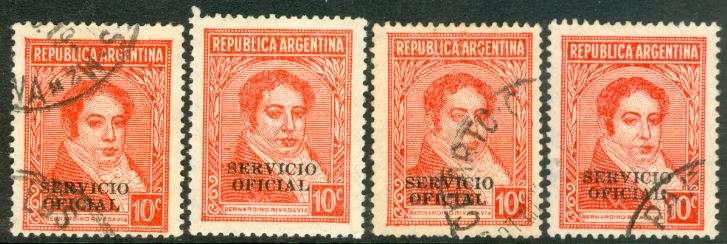
to be continued ...
Re: The Manual - G.A. Pettigiani - 2010
Publicado: 09 Oct 2010 16:37
por Rein
For the "normal" stamps:
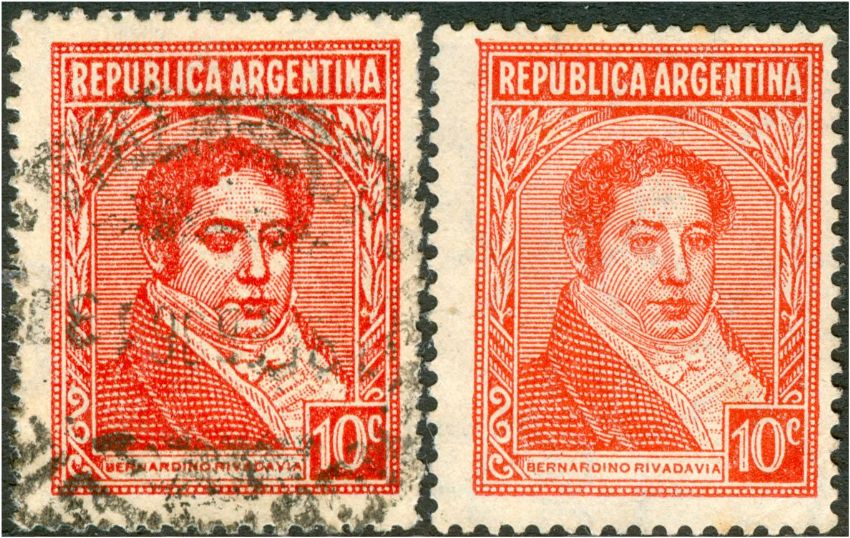
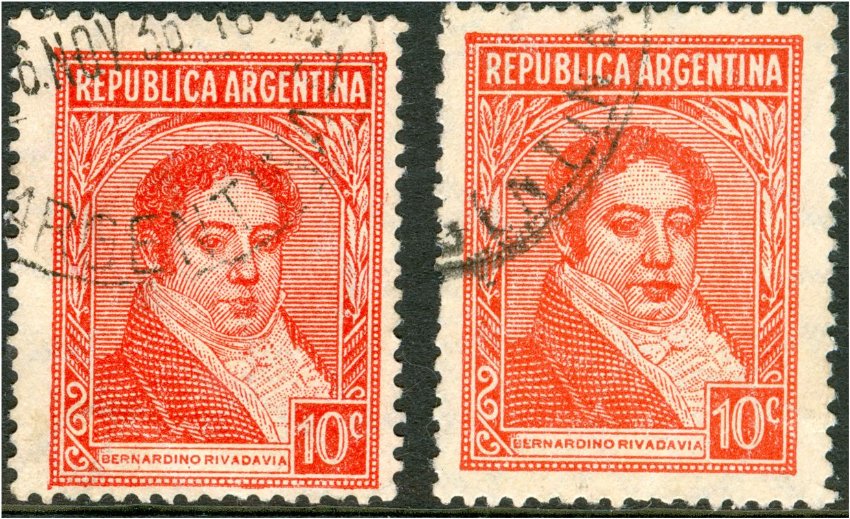
all type II sheet-fed next to reel-fed!
to be continued ....
Re: The Manual - G.A. Pettigiani - 2010
Publicado: 09 Oct 2010 16:42
por Rein
The 10c red printed sheet-fed (17.12.1935 and later) has as far as could be found no subtypes.
For the time being we can call it : type II-sheet-fed;
Whereas the reel-fed 10c red has 2 main types which I had earlier denoted by type II and type III,
type II:

type III:
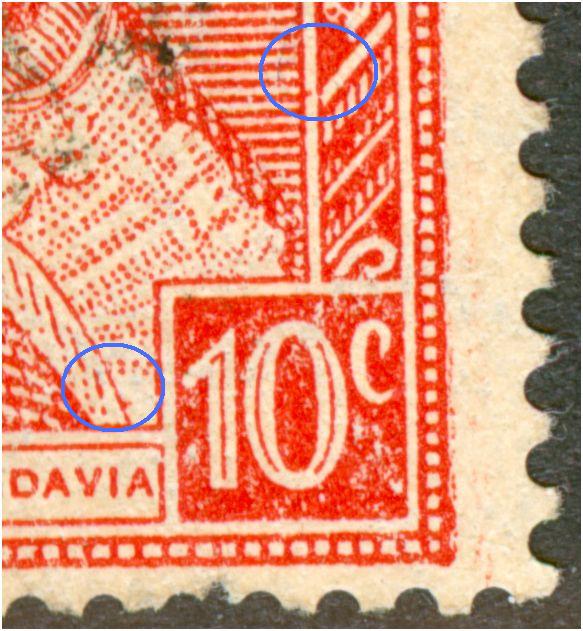
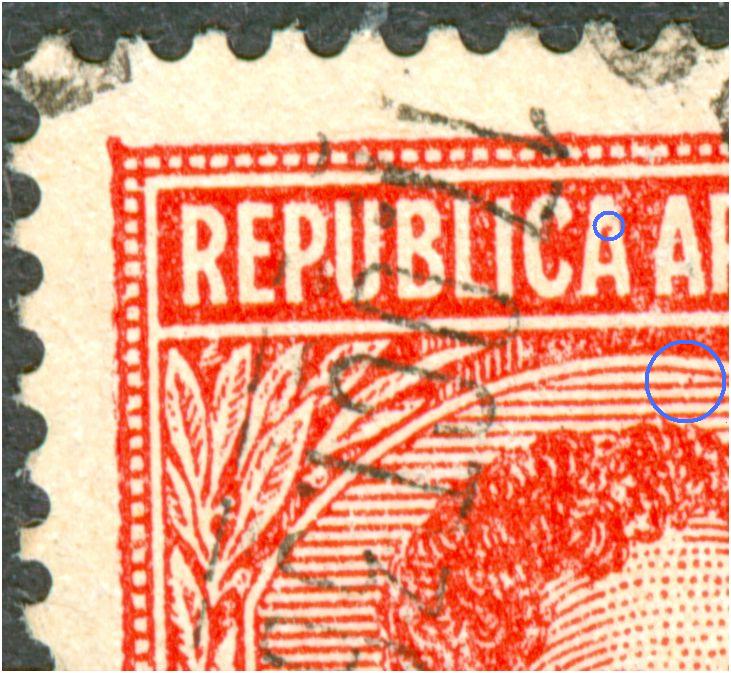
type III has 4 characteristics of which 3 are pretty easy to spot!
to be continued ...
Re: The Manual - G.A. Pettigiani - 2010
Publicado: 09 Oct 2010 16:45
por Rein
Type II reel-fed has a subtype:
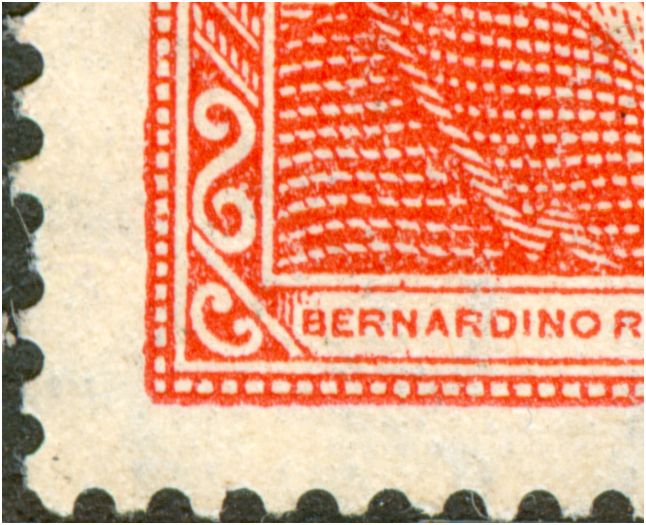


The dot above the "N" of "Bernardino" is the prime characteristic!
to be comtinued ...












